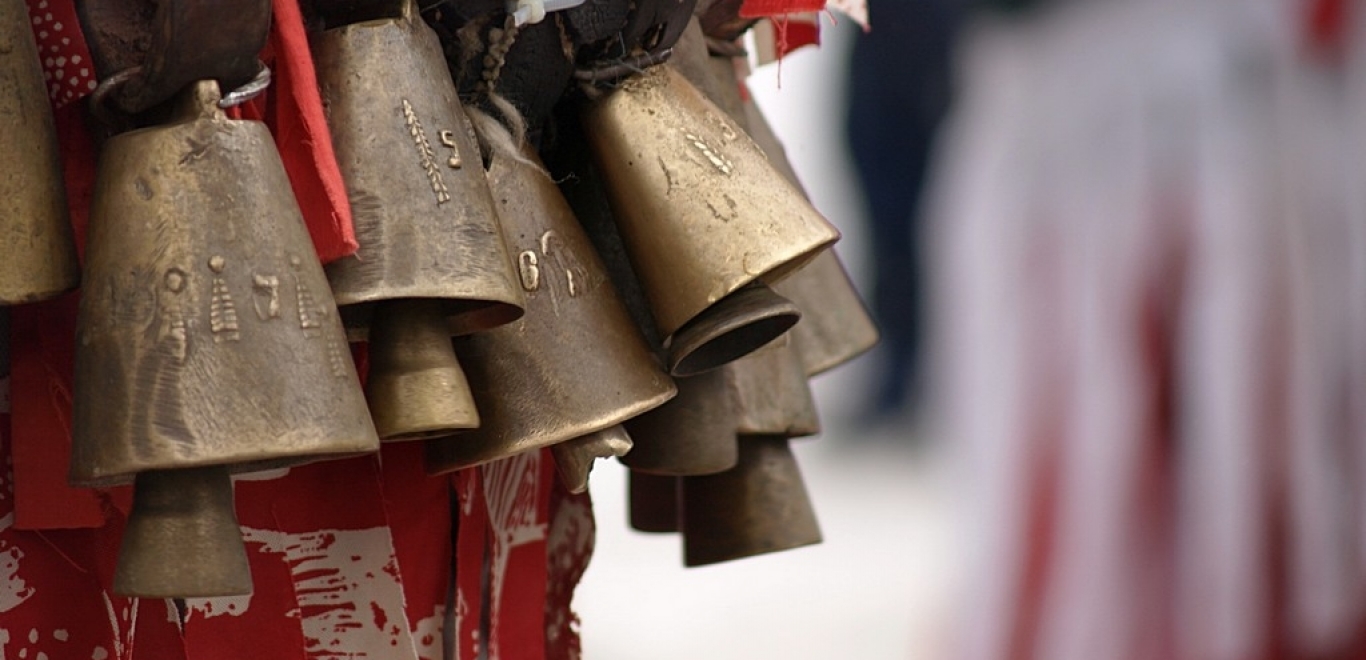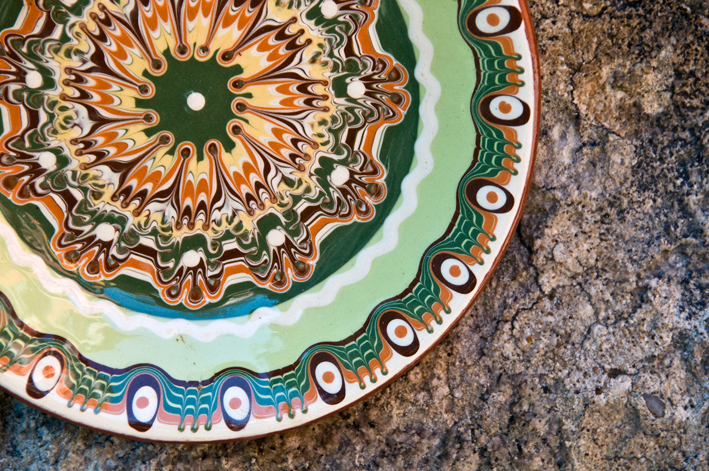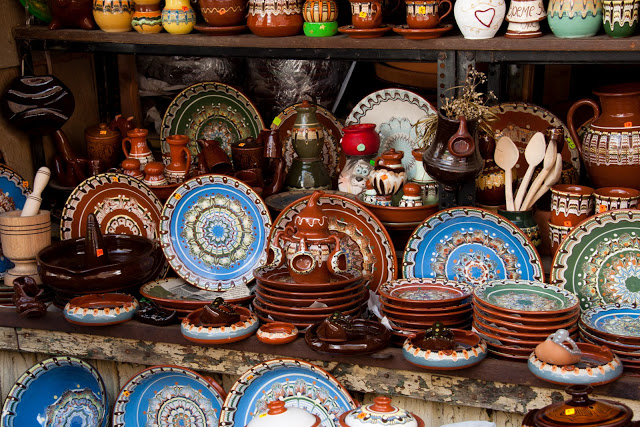


Arrival at Sofia. Transfer to the city centre for a half day city tour of Sofia. Sofia is a city with a 7000-year history, which makes it a unique phenomenon in Europe, and places it among the settlements dating back to most distant antiquity. It has the hectic atmosphere of a big capital city and a compact centre where all main sites can be visited on foot. Roads from all parts of the world have been meeting here - peoples have come and gone, civilizations have advanced and declined, but the city has remained. The Walking city tour which includes: Alexander Nevski Memorial Cathedral, St Sofia Church, Parliament square, the monument of King Liberator, Russian church, National Theatre, The Ethnographic Museum, The National art Gallery outside, Archeological Museum outside, the Presidency, St. George`s Rotunda. Overnight.
HIGHLIGHT OF THE DAY : POTTERY
Troyan is a town renowned for its pottery and ceramics. The town is rich in red clay and has a long history of producing pottery. The regional techniques were popularized during the National Revival period that began in 1762 during Ottoman rule and the Liberation period and the Russo-Turkish conflict that followed. There is the ‘dry pattern’ where the clay is decorated by etching a horn on dried paint. There is the ‘wet pattern’ where swift brush strokes on a wet surface produce circular designs. Troyan pottery is also identified by very natural designs with floral patterns very common. Over the years, the craft has evolved and innovation is now sought over tradition.
Breakfast. Drive to Troyan Monastery - the third-largest in Bulgaria and spend part of the day surveying its famous wood carvings and the iconography of Zahari Zograf, one of the most famous artists from the National Revival period. He painted the exterior and interior of the main church. Rounding off the day in Apriltzi. Overnight.
HIGHLIGHT OF THE DAY : ICONPAINTING
The tempera technique has been used in Bulgaria since ancient times. After the official adoption of Christianity in 865 this method was applied to icon production. This way of depicting icons has been preserved for more than 1,100 years. The oldest icons found in Bulgaria illustrate that the tempera technique kept the images unchanged since they were created. Learn the process and participate in the creation of this magical piece of art.
Breakfast, Full day in Aprilzi village and its beautiful surroundings. Icon-painting workshop is planned in the morning. Overnight.
HIGHLIGHT OF THE DAY : COOKING OF TRADITIONAL PASTRY - BANITSA
Culinary delight activity that includes demonstration and participation of preparing the local Bulgarian dish called Banitsa. During the demonstration a folklore ensemble will meet and greet the tourists. Banitsa is a traditional Bulgarian food prepared by layering a mixture of whisked eggs and pieces of cheese between filo pastry and then baking it in an oven.
Breakfast. Heading to the village of Arbanassi where its Holy Nativity Church is a must-see. Continue with a visit of the regal town of Veliko Tarnovo - cultural centre of northern Bulgaria. Dubbed the City of the Tsars because of its crowning as the capital during the reign of the Second Bulgarian Empire, it was home to several of Bulgaria's former monarchs. Overnight in Veliko Tarnovo.
HIGHLIGHT OF THE DAY : WOODCARVING DEMONSTRATION
Tryavna, also in central Bulgaria, is another town built on its propensity for arts and crafts. During the aforementioned Revival period, its textile and wood-carving industries enjoyed immense growth. The museum, Daskalov House was built in 1808 and is home to the wood-carved suns, a shining example of how the craft thrived in the town. One of the oldest artistic schools originated in Tryavna during the National Revival. Woodcarving is a traditional craft here and the local artisans are successors of the famous Tryavna Woodcarving and Icon-painting School.
After breakfast the tour moves onto the village of Bozhentzi, noted for its architecture from the National Revival period. Here almost all the buildings were built during the 18th in the typical of this region of Bulgaria Revival Style. In Bozhentsi one is carried away in the past and finds out an unsuspected idyll and calmness among the spiritually of the old houses. Continue to Tryavna. The old part was proclaimed an architecture reserve with about 140 monuments of Revival period. The influence of the representatives Tryavna art School is strongly felt. Masons built beautiful houses, schools and churches. Icon painters ornamented them with icons and murals paintings and woodcarvers completed their work with unparalleled altars, ceilings and windows.
HIGHLIGHT OF THE DAY : MUMMERS` DANCING AND LOCAL HOME-MADE BRANDY TASTING
The custom of "Mummers" ("Kukeri") in the Bulgarian lands was originated thousands of years ago. It was celebrated by the Thracian tribes when meeting their new year and the beginning of the new planting season associated with tilling the fields. With their rituals the Kukeri dance the winter away and welcome the coming summer fertility. In different parts of Bulgaria the mummers go out at different times. They dress in leather or with a mixture of male and female clothes and put on scary masks, hang bells and carry swords or sticks to frighten away the frigid and fruitless winter. Then they dance in the streets to scare the evil forces and to banish the cold and perform rituals for fertility and health such as plowing, sowing, and others.Visit a local old-style distillery for Bulgarian brandy and demonstration of the traditional way of breweing it /available only late July – late October/.
Breakfast. Drive to the Ethnographique complex Etara, where an open-air museum is the main attraction. The national park encompasses seven hectares of land and is a tribute to the toil of the region’s craftsmen during the Revival. It was created to preserve for the coming generations the appearance and the spirit of the old time Bulgarian mountain villages and the manufacturing traditions of the region. The museum was built on the two sides of a small river and all the buildings and sites have their authentic appearance, the same as they had during the 19th century. Crossing the Balkan range and heading via the Rose Valley to the town of Karlovo. In the afternoon attend a mummers dancing and home-made brandy tasting. Overnight.
HIGHLIGHT OF THE DAY : CLASSES OF BULGARIAN FOLK DANCE – « HORO » AND WEAVING DEMONSTRATION
One will be introduced to the world of Bulgarian folk dancing with the first steps of the most common Horo. It is a type of circle dance originating in the Balkans. The traditional Bulgarian dance horo comes in many shapes. It is not necessary to be in a circle, a curving line of people is also acceptable. The steps used in a horo dance are extremely diverse and may vary depending on the specific type. In the past, the horo dance had a social role in Bulgarian society. It was mainly for fun, as a contest of skills, or for the show, leading to the development of the variety of horo dances.
Weaving as a craft dates back since ancient times in our lands. There used to be a loom in every household. Nowadays there are few women who still have the looms of their grandmothers and even fewer are those who can use it. We will show you the authentic way the clothing was produced before and this craft can be turned into art.
After breakfast, visit to the historic town of Koprivshtitsa, famous for being one of the first locations of the April Uprising in 1876 which led to the eventual collapse of Ottoman rule in Bulgaria. It is located in the Sredna Gora mountain range and is notable for its authentic Bulgarian architecture and relics from the National Revival period and longstanding ties with folk music. Here we will have a lesson of Bulgarian folk dance horo and particpate in a weaving demonstration in one of the old houses there. Late in the afternoob continue to Sofia for overnight
Breakfast. Departure transfer to the airport.
NOTE: DEPENDING ON THE ARRIVAL AND DEPARTURE FLIGHTS, THE PROGRAM WILL BE AMENDED ACCORDINGLY OR ADDITIONAL OVERNIGHTS IN SOFIA CAN BE ADDED.
Our Economy Series are oriented to all our clients who are on a budget but still want to experience and enjoy Bulgaria.
Transfer
Arrival Transfer Airport – Centre of Sofia, sharing, one way only
Guide
English-speaking local guides
Hotels
2-3* hotels, with private bathroom; breakfast included; regardless the location, all hotels are conveniently located next to public transport stations with good connections to the city centre
Meals
Breakfast
Entrance
Not included
Transport
Air-conditioned vehicles; For parties up to 5 persons – the guide is also a driver
Transfer
Roundtrip Transfer Airport – Hotel - Airport, no assistance only driver
Guide
English-speaking escort guide throughout, excluding the transfers
Hotels
3* hotels, buffet breakfast included; the hotels are located in the central area of the town;
Meals
Breakfast
Entrance
Included
Transport
Modern air-conditioned vehicles; For parties up to 5 persons – the guide is also a driver
These Series were created in terms of meeting the expectations of our most demanding clients.
Transfer
Roundtrip Transfer Airport – Hotel - Airport, with English-speaking assistance
Guide
English-speaking escort guide throughout
Hotels
4* o 5* hotels, buffet breakfast included; top central location; porterage service included
Meals
Half board – lunch or dinner according the clients preferences
Entrance
Included
Transport
Modern air-conditioned vehicles; For parties up to 5 persons – the guide is also a driver
44, Pop Bogomil Str. 1202 Sofia, Bulgaria
E-mail: office@alexandertour.com
Tel: (+359) 878 41 41 33
Our working time is:
Monday-Friday
from 09:30 till 18:30